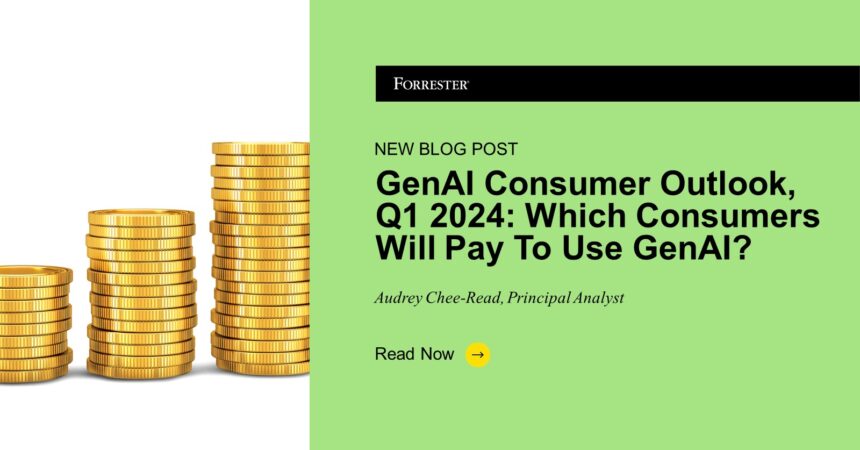Welcome to the second installment of Forrester’s generative AI consumer outlook quarterly blog series! You’ll be able to find the first one here.
With GPT-4 Turbo’s launch in late 2023, Google’s announcement of Gemini, and Microsoft Copilot’s Super Bowl ad, consumers are now faced with plenty of options for consumer-facing generative AI (genAI) tools. But as new versions of genAI tools launch, so does the monetization of these platforms. The three big consumer-facing large language model (LLM) platforms — Gemini, Copilot, and ChatGPT — all have premium versions for which consumers can pay $20 per month. Each premium version boasts faster response times and more bells and whistles. For example, Microsoft Copilot Pro works across multiple devices and can carry context across these apps.
Which Consumers Are More Likely To Pay?
According to Forrester’s September 2023 Consumer Pulse Survey, 29% of US online adults who have heard of genAI say that they are willing to pay a monthly subscription fee for genAI tools (compared to 24% in Italy and 17% in Germany). We find that men are much more likely to be willing to pay than women and that over half of US Millennials are willing to pay, among online adults who have heard of genAI.
While this data point encapsulates those consumers willing to pay a monthly subscription for general genAI platforms such as ChatGPT, it also includes those using specialized genAI tools like GitHub Copilot or DALL·E. But when it comes to the latest three consumer-facing genAI platforms, ChatGPT, Gemini, and Copilot, only about one-fifth of US online adults in Forrester’s CommunityVoices Market Research Online Community say that they are willing to pay. The consumers willing to pay cite reasons such as “more exclusive access and features” or “I would pay if the added features made me more productive and saved me time.”
Most consumers, however, are unwilling to pay, believing that what is currently available is good enough. As one consumer put it, “I think that there are many free programs available, and when popularity continues to grow, more free versions will be available.” Many consumers are only starting their genAI journey and have yet to fully understand its abilities, with one saying that there is “not enough use for AI until I test the free version first to see what I can do with it.”
Marketers Should Focus On Specific Use Cases To Appeal To Consumers
While genAI has been the talk of the town, it’s important to remember that many consumers have yet to start or are still starting their genAI journey. Many who are further along their journey have specialized use cases for it and thus see the need to pay for it. For consumers, much of their behavior will be driven by specific use cases for which they go to genAI — therefore, specialized uses like creating new images or videos will see a bigger draw toward payment than genAI capabilities that may still be able to be solved via a search query. Marketers looking to monetize on genAI should look to specific use cases for a targeted audience (e.g., creating advertising assets for research purposes) before going broader.
Want to understand more on how consumers feel about genAI? Feel free to schedule a guidance session with me.








